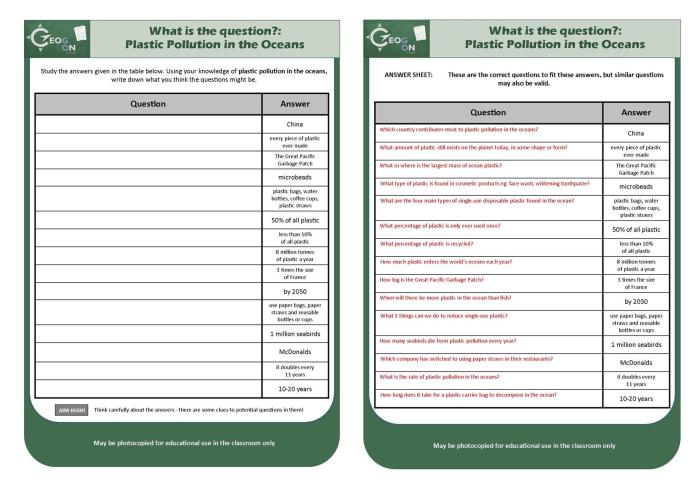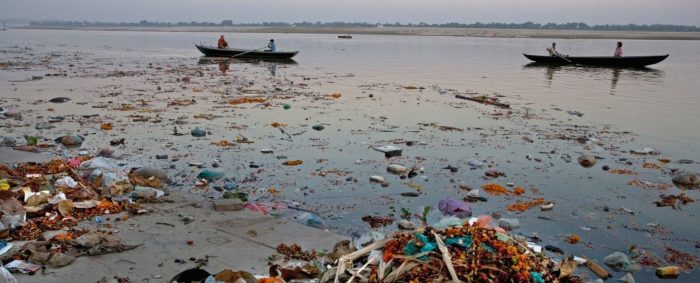Unveiling the depths of marine conservation, the “A Plastic Ocean Worksheet Answers PDF” provides an immersive educational experience. Designed for students of all levels, this comprehensive worksheet delves into the pressing issue of plastic pollution in our oceans, fostering a deeper understanding of its impact on marine life and ecosystems.
Through interactive activities, visual aids, and thought-provoking questions, this worksheet empowers students to explore the causes, consequences, and potential solutions to plastic pollution. By equipping them with knowledge and critical thinking skills, it aims to inspire future generations to become advocates for a healthier and more sustainable marine environment.
Worksheet Overview
The ‘Plastic Ocean Worksheet PDF’ is an educational resource designed for students and educators to enhance their understanding of the multifaceted issue of plastic pollution in the world’s oceans.
The worksheet is primarily intended for secondary school students and undergraduates pursuing environmental science, marine biology, or related disciplines. It serves as a valuable tool for teachers to incorporate real-world environmental concerns into their curricula.
Learning Objectives
Upon completing the worksheet, students will be able to:
- Grasp the magnitude and impact of plastic pollution in marine ecosystems.
- Identify the sources, types, and distribution of plastic waste in the oceans.
- Understand the harmful effects of plastic pollution on marine life, ecosystems, and human health.
li>Analyze potential solutions and strategies to reduce plastic pollution and promote sustainable ocean management.
Content Analysis
The Plastic Ocean worksheet analyzes the issue of plastic pollution in our oceans. It is divided into several sections, each covering a different aspect of the problem.
The first section provides an overview of the issue, discussing the sources and scale of plastic pollution. It also highlights the impact of plastic on marine life, including entanglement, ingestion, and toxicity.
Section 1: Sources and Impacts of Plastic Pollution, A plastic ocean worksheet answers pdf
- Plastic pollution originates from various sources, including land-based litter, industrial waste, and fishing gear.
- Plastic can harm marine life through entanglement, ingestion, and toxicity.
- Entanglement can restrict movement, cause injuries, and lead to death.
- Ingestion of plastic can block digestive tracts, leading to starvation or malnutrition.
- Toxic chemicals in plastic can leach into the water and harm marine organisms.
The second section of the worksheet focuses on the solutions to plastic pollution. It discusses the importance of reducing plastic consumption, improving waste management, and developing sustainable alternatives to plastic.
Section 2: Solutions to Plastic Pollution
- Reducing plastic consumption can help decrease the amount of plastic entering the oceans.
- Improving waste management, including proper disposal and recycling, can prevent plastic from reaching the oceans.
- Developing sustainable alternatives to plastic, such as biodegradable or plant-based materials, can reduce our reliance on plastic.
The third section of the worksheet provides resources for further learning about plastic pollution. It includes links to websites, organizations, and educational materials.
Section 3: Resources for Further Learning
- The worksheet provides a list of websites, organizations, and educational materials for further exploration of plastic pollution.
- These resources can provide additional information, updates, and opportunities for involvement in addressing the issue.
Activities and Exercises

The worksheet incorporates a range of engaging activities and exercises designed to foster student comprehension and retention of the content.
These activities include:
- Interactive Diagrams:Students manipulate interactive diagrams to explore the impact of plastic pollution on marine ecosystems.
- Data Analysis:Students analyze real-world data on plastic pollution to identify trends and draw conclusions.
- Role-Playing:Students engage in role-playing scenarios to simulate stakeholder perspectives on plastic pollution and its solutions.
- Creative Writing:Students express their understanding of the issue through creative writing exercises, such as writing poems or short stories.
Effectiveness of Activities
These activities are highly effective in promoting learning and retention. By engaging students in active and interactive tasks, the worksheet:
- Enhances Understanding:Hands-on activities allow students to grasp complex concepts and visualize the impact of plastic pollution.
- Promotes Critical Thinking:Data analysis and role-playing exercises encourage students to critically evaluate information and consider multiple perspectives.
- Fosters Collaboration:Group activities, such as role-playing, promote collaboration and communication among students.
- Increases Retention:Creative writing and interactive diagrams help students retain information through engaging and memorable experiences.
Visual Aids and Resources
The worksheet effectively employs visual aids and resources to enhance the learning experience and support student understanding of the topic.
Images and Diagrams
The worksheet includes high-quality images and diagrams that illustrate key concepts and provide visual representations of complex ideas. These visuals help students visualize and comprehend the material, making it more accessible and memorable.
For instance, one image depicts the accumulation of plastic waste in the ocean, visually demonstrating the extent of the problem. Another diagram illustrates the lifecycle of plastic, showing how it is produced, used, and disposed of, which helps students understand the systemic nature of plastic pollution.
Graphs and Charts
The worksheet also incorporates graphs and charts to present data and statistics related to plastic pollution. These visuals allow students to analyze trends, compare data, and draw informed conclusions.
For example, one graph shows the increasing production of plastic over time, highlighting the growing threat it poses to the environment. Another chart compares the amount of plastic waste generated by different countries, providing a global perspective on the issue.
Videos and Multimedia
The worksheet includes links to videos and multimedia resources that provide additional context and insights into plastic pollution. These resources offer students an immersive and engaging learning experience, allowing them to explore the topic in greater depth.
One video, for instance, features interviews with marine biologists discussing the impact of plastic pollution on marine life. Another multimedia resource provides an interactive simulation that allows students to track the movement of plastic waste in the ocean, demonstrating the far-reaching effects of plastic pollution.
Assessment and Evaluation: A Plastic Ocean Worksheet Answers Pdf
The worksheet includes various assessment methods to evaluate student understanding of the plastic ocean issue.The worksheet includes quizzes, projects, and discussions to assess student learning and understanding. Quizzes provide immediate feedback on students’ knowledge and understanding of the concepts covered in the worksheet.
Projects allow students to demonstrate their understanding through creative and hands-on activities. Discussions encourage students to engage with the material and share their perspectives, fostering critical thinking and collaboration.These assessment methods are effective in evaluating student progress. Quizzes provide a quick and easy way to assess students’ understanding of the material.
Projects allow students to demonstrate their understanding in a more comprehensive way. Discussions encourage students to think critically about the material and share their perspectives.
Recommendations and Improvements
To enhance the educational value and effectiveness of the worksheet, several recommendations and improvements can be implemented.
Content Enhancement
- Incorporate more real-world examples and case studies to illustrate the impact of plastic pollution on marine ecosystems and human health.
- Include interactive elements, such as simulations or online games, to engage students and make learning more experiential.
- Provide additional resources for students to explore the topic further, such as documentaries, websites, or books.
Activity and Exercise Improvement
- Design activities that promote critical thinking and problem-solving skills, such as debates or group discussions on the ethical and environmental implications of plastic consumption.
- Include hands-on experiments or demonstrations to illustrate scientific concepts related to plastic pollution, such as the decomposition rates of different types of plastic.
- Provide opportunities for students to apply their knowledge to real-world situations, such as designing a campaign to reduce plastic waste in their community.
Assessment and Evaluation
- Develop a more comprehensive assessment rubric that evaluates students’ understanding of the topic, their ability to apply their knowledge, and their critical thinking skills.
- Incorporate peer assessment or self-reflection components to encourage students to provide feedback on their own work and that of their peers.
- Consider using technology-based assessment tools, such as online quizzes or simulations, to provide immediate feedback and track student progress.
Adaptability
- Design the worksheet to be adaptable to different educational contexts and levels, such as by providing differentiated activities or adjusting the complexity of the content.
- Make the worksheet accessible to students with diverse learning styles by incorporating a variety of learning modalities, such as visual aids, auditory activities, and kinesthetic experiences.
- Consider translating the worksheet into multiple languages to make it accessible to a wider audience.
Question Bank
What is the target audience for this worksheet?
Students of all levels, from elementary school to high school.
What are the learning objectives of this worksheet?
To understand the sources and impacts of plastic pollution in oceans, explore potential solutions, and develop critical thinking skills related to marine conservation.
How does this worksheet assess student learning?
Through a variety of methods, including quizzes, discussion questions, and project-based activities.
